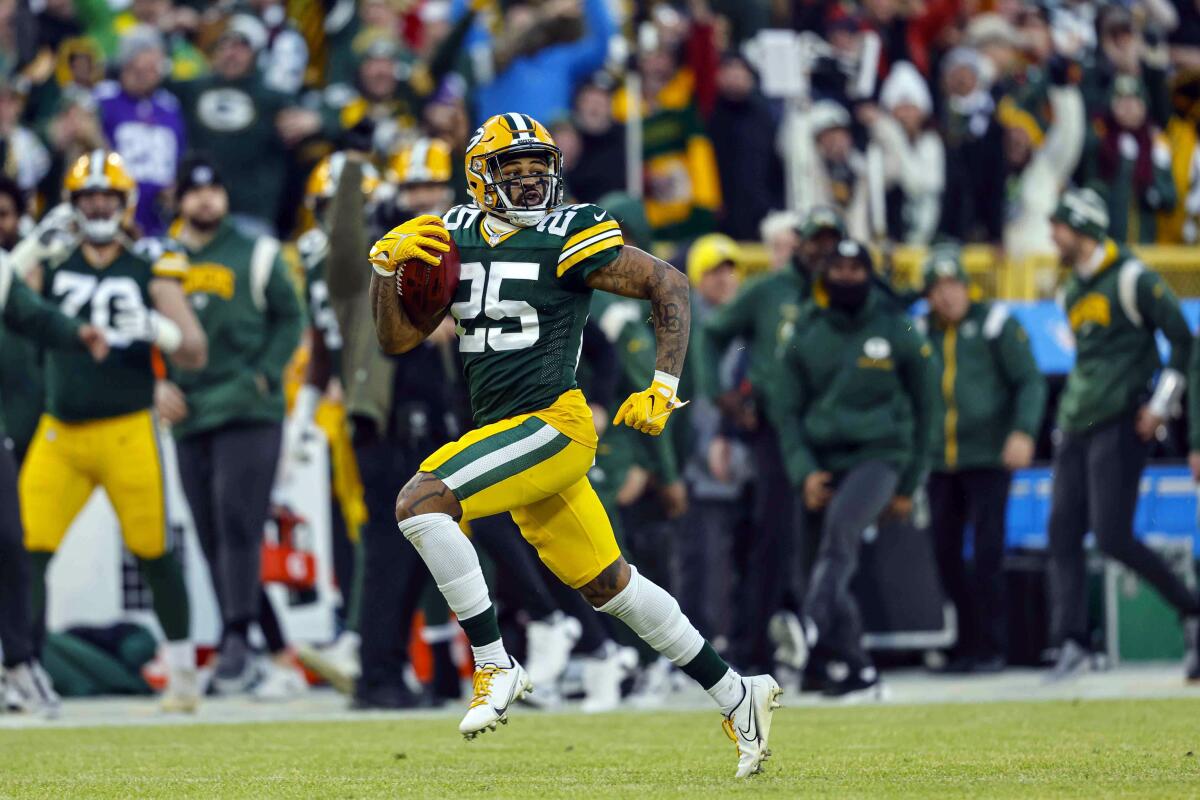New NFL rule for kickoff safety puts ball on 25-yard line after fair catch

- Share via
EAGAN, Minn. — The NFL has pushed the kickoff return further toward irrelevance with a priority on player safety.
League owners voted Tuesday for a one-year trial of an enhanced touchback rule that will give the receiving team the ball at its own 25 with a fair catch of a kickoff anywhere behind that yard line.
The proposal passed despite an expression of distaste for it from coaches and players across the league. They argued the rule change will create uglier plays with squib and corner kicks that are impossible for fair catches.
“I’ve been in this for a long time. I’ve seen these type of health and safety discussions,” said Atlanta Falcons Chief Executive Rich McKay, who is chairman of the competition committee. “We tend to get ourselves to the right place, but it’s never that comfortable.”
The Chargers have added nearly $2 million in incentives to the contract of Austin Ekeler, who had expressed dissatisfaction with his current deal.
The NFL said its statistical models predict the return rate for kickoffs in 2023, under the new rule, will drop from 38% to 31% and that the rate of concussions on the sport’s most dangerous play will be reduced by 15%. Concussions on kickoffs occur more than twice as often as on plays from scrimmage, and that rate has risen significantly over the last two years.
One reason for the recent increase in head injuries? The improved skill of kickers to be able to strategically hang the ball longer and higher in front of the goal line, allowing the coverage more time to make a tackle and force the opponent to start its drive behind the 25 while avoiding an end-zone touchback.
The NFL essentially copied a rule that was already in place in college football.
“We needed to do something,” McKay said. “We just can’t sit there and ignore that data.”
More to Read
Go beyond the scoreboard
Get the latest on L.A.'s teams in the daily Sports Report newsletter.
You may occasionally receive promotional content from the Los Angeles Times.











